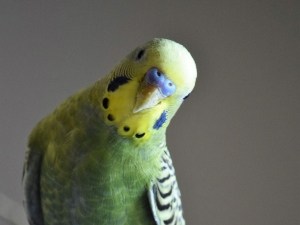
Abnormal behavior in your budgie may be nothing at all, or, it may be something very serious.
Your budgie twitching its leg is abnormal behavior. This article looks into why your budgie may be twitching its leg.
Table of Contents
Budgie twitching leg:
A twitching, on any of your bird’s body parts, will likely cause alarm bells to start ringing in your head.
This should cause you to worry as this can mean that the bird is suffering a seizure.
Here is what you need to know about seizures in budgies:
Seizures in budgies:
Seizures can make one part of your bird’s body, or many parts of your bird’s body, shake and tremble uncontrollably.
This is different than the uncontrollable shaking that birds do when they are cold, that is a whole-body experience.
If your bird is shaking its leg then the bird is likely seizing.
This condition not only affects budgies, it can also affect finches, canaries, cockatiels, amazon parrots, lovebirds, and African grey parrots to name a few.
What causes this:
A variety of things can cause your bird to start to seize up.
When there is an unexpected disturbance in your budgies brain the result is a seizure.
Seizures, in your budgie, can be caused by the ingestion of toxins, a nutritional deficiency, trauma to the bird’s head and brain, stressors in your bird’s environment, infections diseases, and your bird may even develop a seizure because of an unknown cause.
Other signs of a seizure:
Not only will your budgie’s leg tremble if it is experiencing a seizure, but other symptoms will also be seen, symptoms like:
- Falling to the bottom of the cage
- Vocalizations
- Loss of consciousness
- The inability to stand
- Violent muscle spasms
- Twitching of the head
What to do:
If you notice signs of a seizure in your budgie, and you can get the bird to the vet, then you should get the bird to the vet.
If you can’t immediately get the bird to the vet then keeping the bird comfortable until you can get it to the vet is recommended.
Keep the bird comfortable by padding the bottom of its cage to keep it from becoming injured if it falls
You can also leave nutritious food in the bird’s cage and leave water in a shallow dish in the birds cage.
Make sure that the water isn’t high enough that the bird can drown if it falls in.
Leave the bird’s cage in a dimly lit and warm room, but not too warm that the bird overheats.
At the vet:
Expect the vet to physically examine the bird, run tests on the bird and ask about the birds eating habits and history.
All this will help in diagnosing the underlying cause of the seizures.
The vet will give the bird medications that will stop the seizures for now and then treat the bird for the underlying cause of the seizures once diagnosed.
After the vet:
Keep the bird in its comfortable cage after coming back from the vet, this will be a good place for the bird to recover in.
The bird should stop seizing once fully recovered from its condition so make sure that you follow the instructions from your vet about treatment for the bird.
If you enjoyed this article then you may also be interested in other bird related articles. Here are some articles that you may be interested in: Stress Seizures In Birds, Bird Died After Bath, Canary Twitching Head, Cockatiel leg twitching, Why Does My Cockatiel Love My Feet?, Why Does My Cockatiel Sing To My Feet?, How Do I Know If My Budgies Beak Is Too Long?, Why Is My Budgies Head Bleeding?, What To Do If Budgie Beak Is Too Long?

